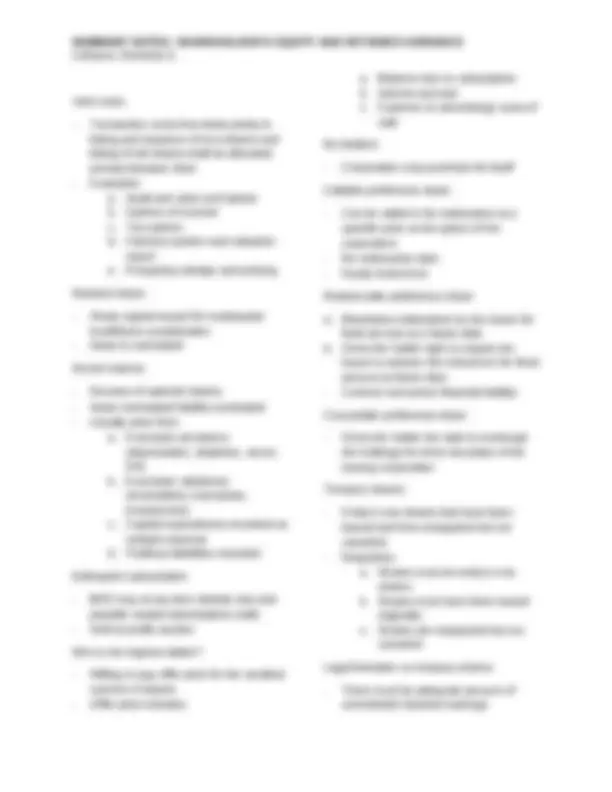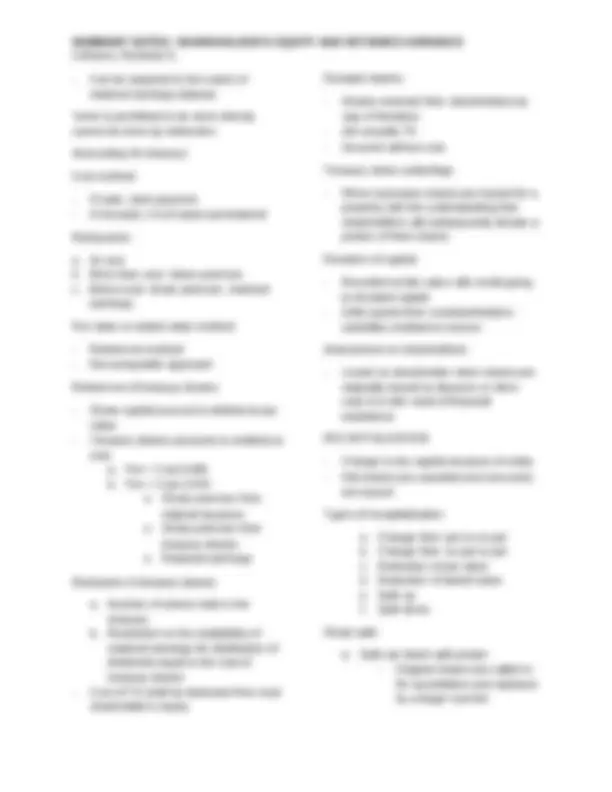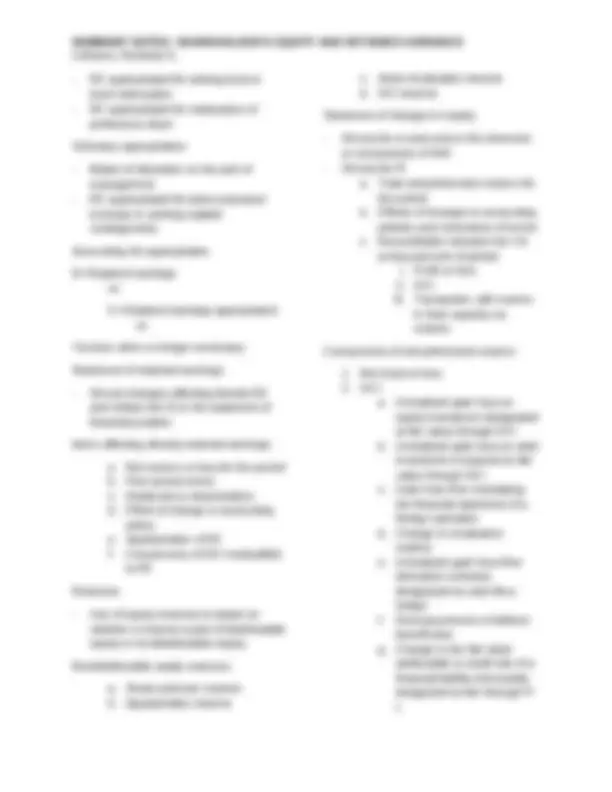
SUMMARY NOTES- SHAREHOLDER’S EQUITY AND RETAINED EARNINGS
Lofranco, Kimberly G.
SHAREHOLDER’S EQUITY
Corporation:
-artificial being created by operation of
law
-have right of succession
-powers, attributes, properties expressly
authorized by law/ incident to its
existence
-legal/ juridical person separate from
members
Organization of a corporation:
-PH general law: Corporation Code
Legal requirement:
-5 or more person, not exceeding 15
-Articles of incorporation (SEC)
-By-laws (rules of action)
Preincorporation and subscription
requirement:
-25% stocks subscribed, at least 25% of
the subscription paid
-No capital less than P5,000
Components of corporation:
a. Corporators
b. Incorporators
c. Shareholders/ stockholders
d. Members
Books and records of a corporation:
a. Minutes book
b. Stock and transfer book
c. Books of accounts
d. Subscription book
e. Shareholders’ ledger
f. Subscribers’ ledger
g. Share certificate book
Organization cost
a. Legal fees
b. Incorporation fees
c. Share issuance costs
Shareholder’s equity:
-residual interest of owners in the net assets
of a corporation
Definition of terms:
Share capital- portion of paid in capital
representing total par
Subscribed share capital- potion of
unauthorized share capital that has
been subscribed but not fully paid (still
unissued)
Share premium- portion of paid in
capital representing excess over par
Retained earnings- cumulative balance
of periodic earnings, dividend
distributions, prior period errors etc.
Revaluation surplus- excess of revalued
amount over CA
Treasury shares- shares issued,
reacquired but not canceled
Deposits on subscriptions
Capital Stock:
-Amount fixed in AOI
-Authorized share capital divided into
shares evidenced by a share certificate
-Share represents rights of shareholder:
a. to share in the earning of the
corp
b. to vote in the election of directors
and determination of corporate
policies
c. to subscribe for additional share
issues (right of preemption/
share right)
d. to share in the net assets of corp
upon liquidation
-shares can be par/ no par value
-no par value share cannot be issued for
less than P5


















